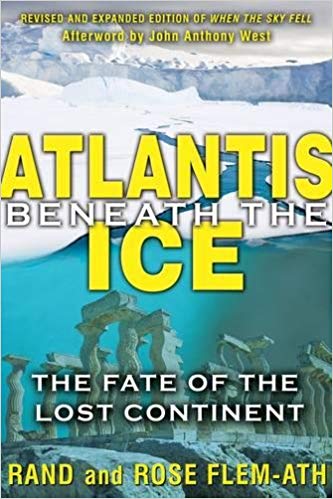Republished by Blog Post Promoter
I recently read the revolutionary book ATLANTIS BENEATH THE ICE, written by Rand and Rose Flem-Ath. The book is about a world-wide legend of a lost civilization. More importantly it reveals the scientific reality of repeated global cataclysms caused by sudden shifts in the crust of Earth. Forget about asteroids — Atlantis, and most of the life forms on Earth, have been wiped out – repeatedly – by a “natural” event that happens over and over again: Earth Crust Displacement. Students of the book Alien Interview will want to read this book. — Lawrence R. Spencer
Albert Einstein spent the last few years of his life corresponding with Charles Hapgood’s on the subject of Earth Crust Displacement. They examined ancient yet highly accurate world maps, including the Piri Reis map of 1513, and show how the earth’s crust shifted in 9600 BCE, dragging Atlantis into the polar zone where it now lies beneath miles of Antarctic ice.
 Included in the book is rare material from the archives of Charles Hapgood, Albert Einstein, and Dwight D. Eisenhower, the Flem-Aths explain how an earth crust displacement could happen again in the future, coincident with high solar activity. With new scientific, genetic, and linguistic evidence in support of Antarctica as the location of long-lost Atlantis, this updated edition convincingly shows that Atlantis was not swallowed by the sea but was entombed beneath miles of polar ice.
Included in the book is rare material from the archives of Charles Hapgood, Albert Einstein, and Dwight D. Eisenhower, the Flem-Aths explain how an earth crust displacement could happen again in the future, coincident with high solar activity. With new scientific, genetic, and linguistic evidence in support of Antarctica as the location of long-lost Atlantis, this updated edition convincingly shows that Atlantis was not swallowed by the sea but was entombed beneath miles of polar ice.
In this completely revised and expanded edition of When the Sky Fell, Rand and Rose Flem-Ath show that 12,000 years ago vast areas of Antarctica were free from ice and home to the kingdom of Atlantis, a proposition that also elegantly solves the mysteries of ice ages and mass extinctions, the simultaneous worldwide rise of agriculture, and the source of devastating prehistoric climate change.
From the Cherokee, Haida, and Okanagan of North America to the earliest records of Egypt, Iran, Mexico, and Japan, they reveal that ancient myths of floods, lost island paradises, and visits from advanced godlike peoples from all corners of the globe all point to the same worldwide catastrophe that resulted in Atlantis’s demise. The authors explain how the remaining Atlanteans, amid massive earthquakes and epic floods, evacuated and spread throughout the world.
READ THE BOOK —
